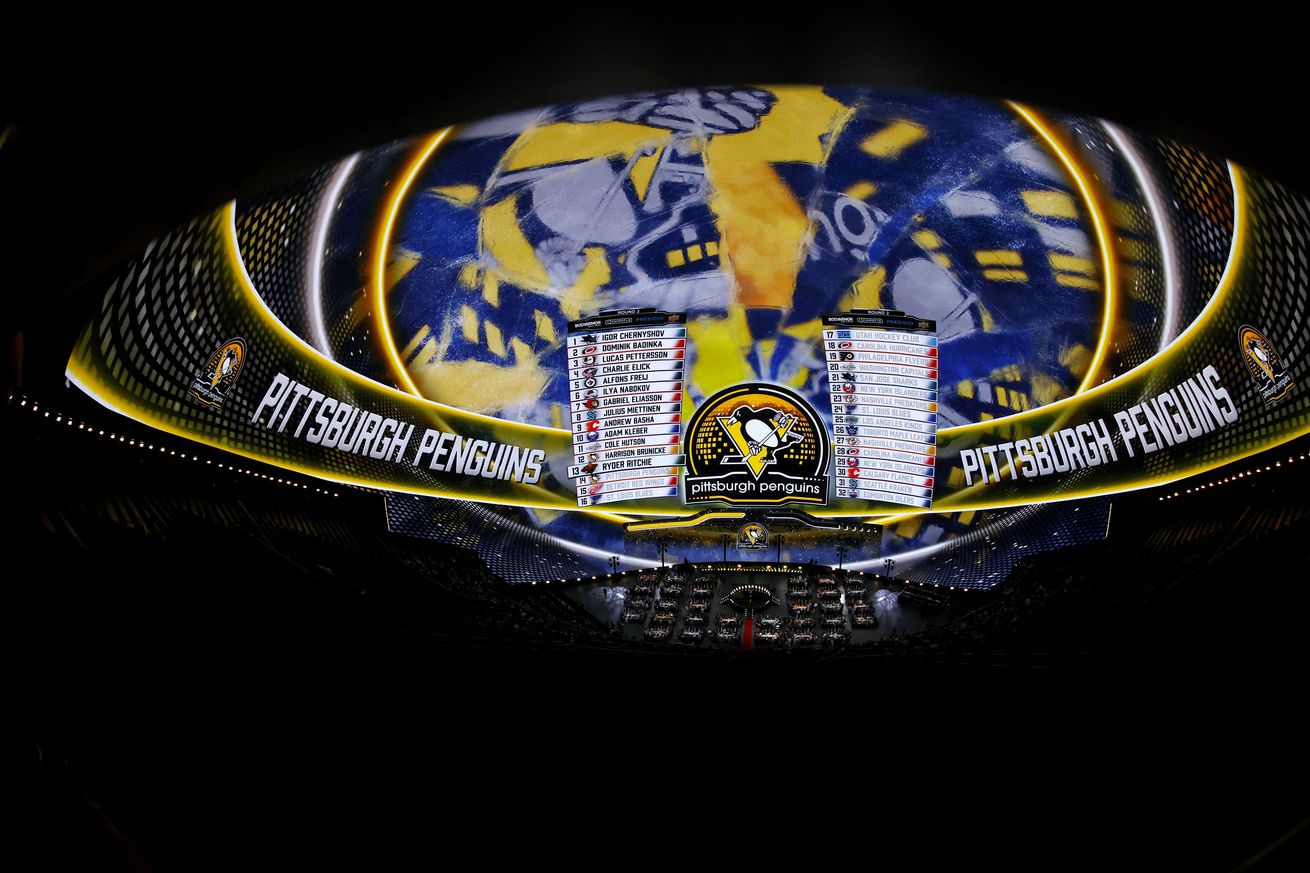
It’s hard to draft
If you ever want to be humbled, participate in mock drafts for a prolonged period with other people and track the results. That’s the lesson from looking back at the good ol’ days of the SB Nation mock drafts. Then again, probably don’t do that with the Penguins because they traded too many picks in this period and when they did keep their picks they were difficult ones to make without a ton of key players around.
It’s no accident that there is a general (and intentional) theme to attempt to take as much high-skill players as possible. The Penguins were in the height of the Sidney Crosby/Evgeni Malkin era during this time, there was no such thing as too much young talent to provide them with in hopes it would help the (hypothetical) team.
The issues revealed by looking back at mock drafts demonstrate the tough part for recognition more than intention, however. This is illustrated well in 2014, we wanted the player that turned into David Pastrnak. But no one knew that David Pastrnak was going to be THE David Pastrnak, so we mock drafted Nikita Scherbak (career NHL totals: 37 games, six goals, two assists). Looking back, that hurts.
That’s also the trouble of the NHL draft, the players get picked before anyone can truly know who is going to end up being who. That’s why Brendan Perlini, Jakub Vrana, Julius Honka, Kasperi Kapanen and Conner Bleackley (among others) got drafted before Pastrnak in real life. Trying to forecast these things is not just extremely hard, it’s basically impossible to accurately identify ahead of time which 17-18 year olds will end up growing up to be the best pro hockey players with any real consistency. Players are spread too far, from too many backgrounds and development is a guessing game of unknown positive or negative future events. The best looking prospect could get derailed with injury. The skinny kid picked in a middle round could pan out and blossom into an NHL All-Star. You just never know, besides the realization there are always more misses that hits. That’s worth keeping in mind for the next few days.
Some other asides and random thoughts on the draft performance we’ve had.
- I’m encouraged at least to see that the second half of the sample from 2019-23 is a lot better than the first half from 2010-17. That feels good to see some improvement in the results. No doubt a random variance but in the world of NHL drafting it’s fair game to own any and all positive developments.
- We’ve never successfully mocked an actual Penguin selection. I did have extreme suspicions that Owen Pickering was a true, blue Ron Hextall prospect, but frankly didn’t want to draft a player based on what the team could possibly do and instead try to branch out for my own pick. Given that this year we have two cracks at it, and in back-to-back fashion, could that streak be over? Wouldn’t it be wild to double-match to the real team with both picks after all this time of never being on the same page..
- Other than Pastrnak, what’s the biggest whiff for hindsight purposes? The answer might truly be Lane Hutson, but I’ll let myself (and the Pens) off the hook considering he didn’t get drafted until pick 62 and there wasn’t a ton of interest or really reason to pick him in the first round. For the Pens, it goes back to the Ryan Reaves trade – as so many things do. Contrary to popular belief, Pittsburgh didn’t truly trade a first round pick for Reaves – they traded their first round pick (31) for a second (51) and got Reaves (while also giving up Oskar Sundqvist). Still, hang tight at 31, draft Jason Robertson (who went 39th overall in reality) and that’s the best result to cook up with hindsight. Robertson was a point/game player the instant he hit the ice in the NHL in his draft+4, which would have put him on the scene by 2021 and been a huge help to the late-playoff days Penguins. You can play the hindsight game all day long but that post-Cup 2017 to 2019ish period was such a key time to set in motion the eventual downfall of the Pens (Reaves trade, losing M.A Fleury, Brassard trade, Jack Johnson signing, whiffing in 2019 draft, trades of Hagelin and Kessel for what amounted to little/nothing). The team’s lifecycle as a contender was eroded away quite a bit in that two year period and kicked off by the ill-fated draft of 2017.
Since we don’t have a full network to solicit mock draft picks from like past years, we will find a mock of the top-10 and take them off the board in an attempt to pick for No 11 and 12 with the Penguins’ upcoming picks in real life. Hopefully it will show up down the line in some of the better ideas we’ve had but if there’s anything that has been learned in the last several years it’s that picking players in the mid-late part of the first round is an incredibly challenging proposition.